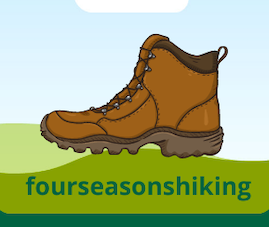Choosing the right capacity for a backpack is a crucial step. It’s essential to carry everything you need for a long excursion without overburdening yourself. Think of it like packing a suitcase, you want enough space for all your gear, but without feeling like you’re dragging around an anchor. Too little capacity and you might end up strapping extra gear to the outside, which can be awkward to carry. Too much and you’ll likely overpack, leading to a heavier load that can wear you out quickly.
Weight is another big factor. It’s all about balancing carrying capacity and not bogging you down. Some backpacks might seem lightweight when empty, but fill them up, and suddenly they feel like a ton of bricks. Look for materials that are not only light but also strong. The goal is to find something comfortable to carry for long periods without compromising on durability.
Speaking of durability, you need something that can withstand the rigors of the trail. You don’t want a backpack falling apart midway through your trip. Consider the fabric and construction. Reinforced stitching, high-denier materials, and solid zippers can make a difference here. Essentially, you’re looking for a balance between toughness and weight, ensuring that your pack can handle rough conditions without becoming excessively heavy.
Design is where things get interesting. It’s not just about how the backpack looks – though let’s be real, no one wants to be seen with an eyesore on their back. Features like multiple compartments, easy-to-access pockets, hydration compatibility, and adjustable straps can transform your experience. A well-thought-out design means you can organize your gear efficiently and access it quickly without unpacking half your bag.
Practical Tips for Selecting the Perfect Backpack
Before committing to a backpack, evaluate your specific needs. Consider the length and type of excursions you typically embark on. Are you into weekend hikes or longer treks? Your backpack should fit your usual activities. There’s no one-size-fits-all solution, so be honest about what you’ll need to carry.
Experimenting with different backpacks can also help make your decision easier. Head to outdoor gear stores and try on several models. Load them up with weights to mimic your real loadout. Pay attention to how the backpack feels on your shoulders and hips. Comfort is key for long excursions, and testing out options firsthand is the best way to find the ideal fit.
Weight distribution is another significant aspect. Ensure the backpack has a well-designed frame and plenty of adjustment options. Proper load distribution can prevent back pain and fatigue, letting you enjoy your journey more. Check for padded shoulder straps and a supportive hip belt. These features help transfer the weight to your hips, where it can be carried more comfortably.
User-friendly design elements should be high on your priority list. Look for easy-to-reach pockets, hydration sleeve compatibility, and robust zippers and buckles. Think about how you pack and what you need to access quickly. Having a backpack that matches your style of packing and traveling can make a huge difference in your overall experience.
Adjusting the backpack to your body is vital. Customize the fit by adjusting the straps and hip belt. A correctly fitted backpack will sit snugly against your back without pulling or sagging. Spend some time fine-tuning these adjustments before hitting the trail to ensure maximum comfort and efficiency on your excursions.
In compliance with the FTC guidelines, please assume the following about links and posts on this site: Any/all of the links fourseasonshiking.com are affiliate links of which I receive a small compensation from sales of certain items.
https://osprey.pxf.io/c/5564501/1765694/20745

Find Your Backpack Click on Link Above
Learn More, Click Link

Lonnie’s article is a well-rounded guide that balances charm and practicality. It provides readers with the knowledge they need to make informed decisions without overwhelming them with technical details. This approach will likely inspire confidence in choosing the right backpack for their adventures, ensuring comfort and efficiency on the trail.
Keep up the good work!
Thank you for your comment, it’s important to have the right backpack for the excursion you will be taking.
Sincerely, Lonnie
This article really gets to the heart of what makes a backpack an indispensable piece of gear. I completely agree that choosing the right capacity is like packing a suitcase just enough room for everything you need, but not so much that you’re weighed down. It’s a delicate balance, especially when you’re on a long trek and every ounce counts.
The practical tips for trying out different models and customizing the fit are also invaluable. It’s true, there’s no one-size-fits-all solution, and taking the time to test out different options can save a lot of discomfort later. Overall, this article is a great guide for anyone looking to find that perfect backpack for their adventures.
Thank you, be sure you click the the link provided to check out some of the best Backpacks made!
Sincerely, Lonnie
Very useful information here. I can personally attest to considering a reasonable amount and distribution of weight. I recently traveled on a solar eclipse viewing trip in which I wanted to bring my telescope to take some pictures. The scope itself weighs only about 5 pounds and I figured it would be no problem carrying it through the airport in a case because I did not want to check it. I think this is similar to taking some gear on a hike. Well much to my dismay, lugging 5 pounds through some very large airports became a huge burden, especially since I had to carry it in one arm, which was very unnatural.
Thank you, experience can sometimes be helpful.
Lonnie
Hello Leonie,
This post on choosing the right backpack for longer excursions is incredibly detailed and practical! I appreciate the emphasis on balancing capacity, weight and durability. It is true that finding the right fit can make or break an adventure. The tips on experimenting with different backpacks and focusing on weight distribution are spot on.
I never thought about how important it is to adjust the backpack to my body for comfort, but it makes a lot of sense. The advice on design features, like compartments and hydration compatibility, is also really helpful.
Thanks for the thorough guide. It is going to be a big help for planning my next trek!
Thank you, yes, the right backpack can make a hike or longer backpacking excursion smooth and easy on our bodies.
Lonnie